#oneplus y series tv specs
Explore tagged Tumblr posts
Text
OnePlus Y Series Smart Android TV
OnePlus Y Series Smart Android TV


OVERVIEW
Connectivity: 2 HDMI ports to connect a set-top box, Blu Ray players, gaming console | 2 USB ports to connect hard drives and other USB devices
Sound: 20 Watts Output | Dolby Audio
Smart TV Features: Android TV 9.0 | OnePlus Connect | Google Assistant | Play Store | Chromecast | Shared Album | Supported Apps: Netflix, YouTube, Prime video | Content Calendar | OxygenPlay
View On WordPress
0 notes
Text
OnePlus launches Y Series TV 40 at Rs 23,999: Sale info, specs, and more

Technology News OnePlus on Monday launched in India a 40-inch screen variant of its Y series smart televisions. Priced at Rs 23,999, the OnePlus Y Series 40 goes on sale from May 26, exclusively on home-grown e-commerce platform Flipkart, at an introductory price of Rs 21,999.
In terms of specifications and features, the OnePlus TV Y Series 40 Smart TV has a 40-inch LED screen. The screen is touted to have a 93 per cent DCI-P3 colour gamut.
ALSO READ: Oppo begins to deliver its products to your home via WhatsApp
As for the technology, the TV’s screen boasts colour space mapping, noise reduction, anti-aliasing and dynamic contrast. It also has the Gamma Engine.
Powered by Android YV 9.0 platform, the smart TV comes with Google Assistant built-in. Besides, there is OnePlus Connect App, which lets user operate the TV using smartphone as a remote control. Audio is handled by two full range 20W box speakers with Dolby Audio enhancement...Read more.
0 notes
Text
OnePlus TV 40Y1 Launched in India : All Specs and Prices
OnePlus TV 40Y1 Launched in India : All Specs and Prices. #OnePlusTV40Y1
Earlier OnePlus launched 32Y1, and 43Y1 but now OnePlus has launched OnePlus TV 40Y1. As they know that the demand for 40″ TV is more in India, so they the 40″ TV. The Y series is the cheaper series by OnePlus. Check out all the specifications and prices of all the segments. ONEPLUS 40Y1 HIGHLIGHTS 93% Colour GamutOxygenPlayBezel less designOnePlus connect64-bit powerful processor OnePlus TV…

View On WordPress
0 notes
Photo

Looking for a 32-inch smart TV? Make sure you go through this comparison before making a decision. These are the best budget 32inch TV's out there currently. . OnePlus recently entered into the budget TV segment with the launch of its Y Series and it now faces competition with Xiaomi and Realme, who are currently dominating in the budget Smart TV segment. . This comparison will highlight its specs and differences which will help users make the right decision before purchasing its budget 32inch Smart TV. . #SmartTV #MITV4APro #RealmeTV #OnePlusTVYSeries #Comparison #HouseOfTech . Like, Share and Follow for all future updates! (at Dubai, United Arab Emirates) https://www.instagram.com/p/CCOe8VsAswZ/?igshid=1wm44gjdk20a6
0 notes
Text
OnePlus TV 32Y1, 43Y1 and OnePlus TV 55U1 launched: Price, specs, and more

OnePlus has launched affordable Y-series and premium U-series smart TVs in India, priced at Rs 12,999 onwards. The OnePlus TV 2020 series includes a 32-inch, 43-inch and 55-inch screen models. The Y-series include the 32-inch (32Y1) and 43-inch (43Y1) models, whereas the 55-inch (55U1) model is part of the U-series.
OnePlus TV 2020 price in India
The OnePlus TV 55U1, OnePlus TV 43Y1 and OnePlus TV 32Y1 are priced at Rs 49,999, Rs 22,999, and Rs 12,999, respectively. The OnePlus TV 32Y1 will be available on Amazon India from July 5. The OnePlus TV 43Y1 and 55U1 shall go on sale at later dates, which have not been disclosed yet by the company.
OnePlus TV Y-series and OnePlus U-series launch offers
Up to 12 months no interest equated monthly instalment (no-cost EMI) valid on all major banks’ cards
Free Amazon Echo Dot with the OnePlus TV 55U1 and OnePlus TV 43Y1 on Amazon India
Amazon Echo Dot at Rs 1,999 with the OnePlus TV 32Y1 on Amazon India. Read More
0 notes
Text
OnePlus TV 32Y1, 43Y1 and OnePlus TV 55U1 launched: Price, specs, and more

OnePlus has launched affordable Y-series and premium U-series smart TVs in India, priced at Rs 12,999 onwards. The OnePlus TV 2020 series includes a 32-inch, 43-inch and 55-inch screen models. The Y-series include the 32-inch (32Y1) and 43-inch (43Y1) models, whereas the 55-inch (55U1) model is part of the U-series.
OnePlus TV 2020 price in India
The OnePlus TV 55U1, OnePlus TV 43Y1 and OnePlus TV 32Y1 are priced at Rs 49,999, Rs 22,999, and Rs 12,999, respectively. The OnePlus TV 32Y1 will be available on Amazon India from July 5. The OnePlus TV 43Y1 and 55U1 shall go on sale at later dates, which have not been disclosed yet by the company.
OnePlus TV Y-series and OnePlus U-series launch offers
Up to 12 months no interest equated monthly instalment (no-cost EMI) valid on all major banks’ cards
Free Amazon Echo Dot with the OnePlus TV 55U1 and OnePlus TV 43Y1 on Amazon India
Amazon Echo Dot at Rs 1,999 with the OnePlus TV 32Y1 on Amazon India
Read Complete Article
0 notes
Text
OnePlus launches 55U1 4K TV, 43Y1 FHD TV and 32Y1 HD Ready TV in India
OnePlus 2020 TV line up is out. The company has announced the three new Smart TVs: 55-inch U1 and more affordable Y series in 43-inch and 32-inch screen sizes. While the U1 supports 4K resolution, the 43Y1 TV comes with Full HD screen and the smaller 32Y1 has only HD resolution. OnePlus TV 55 U1 […]
The post OnePlus launches 55U1 4K TV, 43Y1 FHD TV and 32Y1 HD Ready TV in India appeared first on Smartprix Bytes.
source https://www.smartprix.com/bytes/oneplus-2020-smart-tvs-specs-india-price/
0 notes
Text
OnePlus launches 55U1 4K TV, 43Y1 FHD TV and 32Y1 HD Ready TV in India
OnePlus launches 55U1 4K TV, 43Y1 FHD TV and 32Y1 HD Ready TV in India
OnePlus 2020 TV line up is out. The company has announced the three new Smart TVs: 55-inch U1, more affordable Y series in 43-inch and 32-inch screen sizes. While the U1 supports 4K resolution, the 43Y1 TV comes with Full HD screen and smaller 32Y1 only support HD resolution.
OnePlus TV 55 U1 Features and Specs
The biggest announcement during the today’s live stream was the OnePlus TV55 U1…
View On WordPress
0 notes
Text
How USB charging works, or how to avoid blowing up your smartphone

The tech world has finally coalesced around a charging standard, after years of proprietary adapters and ugly wall-wart power supplies. Well, sort of: We’re already seeing some fragmentation in terms of the new USB-C connector, which could eventually replace USB, as well as what is thankfully turning out to be a short-lived obsession Samsung had with larger USB micro-B connectors for its Galaxy line. But aside from that, and with the obvious exception of Apple’s Lightning connector, micro USB has destroyed the industry’s penchant for custom ports. Ten years ago, you always had to make sure you had the correct power supply for each of your gadgets. Usually, that power supply wasn’t even labeled. Today, you can charge your phone at your friend’s house, plug your ebook reader into any computer, and download photos from a digital camera directly to your TV, all thanks to a standardized connector. In its place, though, there’s a new problem: USB power. Not all USB chargers, connectors, and cables are born equal. You’ve probably noticed that some wall chargers are stronger than others. Sometimes, one USB socket on a laptop is seemingly more powerful than the other. On some desktop PCs, even when they’re turned off, you can charge your smartphone via a USB socket. It turns out there’s a method to all this madness — but first we have to explain how USB power actually works. New specifications
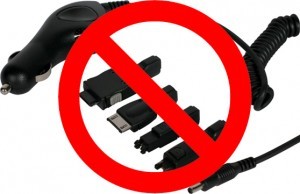
There are now four USB specifications — USB 1.0, 2.0, 3.0, and 3.1 — in addition to the new USB-C connector. We’ll point out where they significantly differ, but for the most part, we’ll focus on USB 3.0, as it’s the most common. In a USB network, there is one host and one device. In almost every case, your PC is the host, and your smartphone, tablet, or camera is the device. Power always flows from the host to the device, although data can flow in both directions, such as when you copy files back and forth between your computer and your phone. Okay, now the numbers. A regular USB 1.0 or 2.0 socket has four pins, and a USB cable has four wires. The inside pins carry data (D+ and D-), and the outside pins provide a 5-volt power supply. USB 3.0 ports add an additional row of five pins, so USB 3.0-compatible cables have nine wires. In terms of actual current (milliamps or mA), there are three kinds of USB port dictated by the current specs: a standard downstream port, a charging downstream port, and a dedicated charging port. The first two can be found on your computer (and should be labeled as such), and the third kind applies to “dumb” wall chargers. In the USB 1.0 and 2.0 specs, a standard downstream port is capable of delivering up to 500mA (0.5A); with USB 3.0, it moves up to 900mA (0.9A). The charging downstream and dedicated charging ports provide up to 1,500mA (1.5A). USB 3.1 bumps throughput to 10Gbps in what’s called SuperSpeed+ mode, bringing it roughly equivalent with first-generation Thunderbolt. It also supports power draw of 1.5A and 3A over the 5V bus.
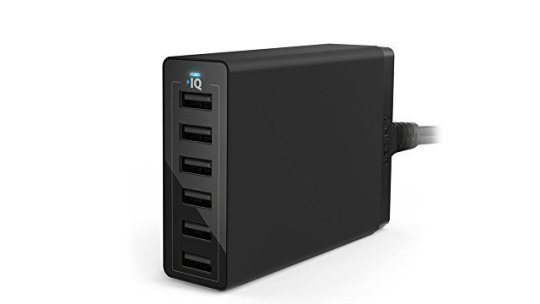
Anker’s 60W-12A 6-Port USB Charger. A unit like this will deliver fast charging to all the ports. 12345678910 USB-C is a different connector entirely. It’s universal; you can put it in either way and it will work, unlike with USB, and like Apple’s Lightning connector. USB-C is also capable of twice the theoretical throughput of USB 3.0, and can output more power. Apple joined USB-C with USB 3.1 on its 12-inch MacBook, and Google included it on the now-discontinued Chromebook Pixel. We’re also starting to see it on phones, with the first being the OnePlus 2; current popular models include the Google Nexus 6P, the OnePlus 3, and the Samsung Galaxy Note7. But there can also be older-style USB ports that support the 3.1 standard. The USB spec also allows for a “sleep-and-charge” port, which is where the USB ports on a powered-down computer remain active. You may have noticed this on your desktop PC, where there’s always some power flowing through the motherboard, but some laptops are also capable of sleep-and-charge. Now, this is what the spec dictates. But there are plenty of USB chargers that don’t conform to these specs — mostly of the wall-wart variety. Apple’s iPad charger, for example, provides 2.1A at 5V; Amazon’s Kindle Fire charger outputs 1.8A; and many car chargers can output anything from 1A to 2.1A. Can I blow up my USB device?
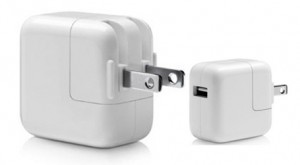
There is a huge variance, then, between normal USB ports rated at 500mA, and dedicated charging ports, which range all the way up to 3,000mA. This leads to an important question: If you take a phone which came with a 900mA wall charger, and plug it into a 2,100mA iPad charger, as an example, will it blow up? In short, no: You can plug any USB device into any USB cable and into any USB port, and nothing will explode — and in fact, using a more powerful charger should speed up battery charging. We now do this all the time with our mobile devices here at ExtremeTech, and we’ve never had a problem. The longer answer is that the age of your device plays an important role, dictating both how fast it can be charged, and whether it can be charged using a wall charger at all. Way back in 2007, the USB Implementers Forum released the Battery Charging Specification, which standardized faster ways of charging USB devices, either by pumping more amps through your PC’s USB ports, or by using a wall charger. Shortly thereafter, USB devices that implemented this spec started to arrive. If you have a modern USB device — really, almost any smartphone, tablet, or camera — you should be able to plug into a high-amperage USB port and enjoy faster charging. If you have an older product, however, it probably won’t work with USB ports that employ the Battery Charging Specification. It might only work with old school, original (500mA) USB 1.0 and 2.0 PC ports. In some (much older) cases, USB devices can only be charged by computers with specific drivers installed, but this is now going back more than a decade. There are a few other things to be aware of. While PCs can have two kinds of USB port — standard downstream or charging downstream — OEMs haven’t always labeled them as such. As a result, you might have a device that charges from one port on your laptop, but not from the other. This is a trait of older computers, as there doesn’t seem to be a reason why standard downstream ports would be used, when high-amperage charging ports are available. Most vendors now put a small lightning icon above the proper charging port on laptops, and in some cases, those ports can even stay on when the lid is closed. In a similar vein, some external devices — 3.5-inch hard drives, most notably — require more power than a typical USB port can provide. That’s why they include a two-USB-port Y-cable, or an external AC power adapter. Otherwise, USB has certainly made charging our gadgets and peripherals much easier than it ever has been. And if the new USB-C connector continues to catch on, things will get even simpler, because you’ll never again have to curse out loud after plugging it in the wrong way. Check out our ExtremeTech Explains series for more in-depth coverage of today’s hottest tech topics. Sebastian Anthony wrote the original version of this article. It has since been updated several times with new information. (Top image credit: Jamie Lendino) Click to Post
0 notes
Text
How USB charging works, or how to avoid blowing up your smartphone

The tech world has finally coalesced around a charging standard, after years of proprietary adapters and ugly wall-wart power supplies. Well, sort of: We’re already seeing some fragmentation in terms of the new USB-C connector, which could eventually replace USB, as well as what is thankfully turning out to be a short-lived obsession Samsung had with larger USB micro-B connectors for its Galaxy line. But aside from that, and with the obvious exception of Apple’s Lightning connector, micro USB has destroyed the industry’s penchant for custom ports. Ten years ago, you always had to make sure you had the correct power supply for each of your gadgets. Usually, that power supply wasn’t even labeled. Today, you can charge your phone at your friend’s house, plug your ebook reader into any computer, and download photos from a digital camera directly to your TV, all thanks to a standardized connector. In its place, though, there’s a new problem: USB power. Not all USB chargers, connectors, and cables are born equal. You’ve probably noticed that some wall chargers are stronger than others. Sometimes, one USB socket on a laptop is seemingly more powerful than the other. On some desktop PCs, even when they’re turned off, you can charge your smartphone via a USB socket. It turns out there’s a method to all this madness — but first we have to explain how USB power actually works. New specifications
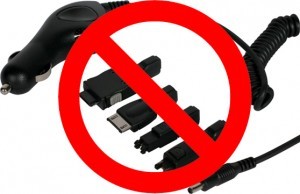
There are now four USB specifications — USB 1.0, 2.0, 3.0, and 3.1 — in addition to the new USB-C connector. We’ll point out where they significantly differ, but for the most part, we’ll focus on USB 3.0, as it’s the most common. In a USB network, there is one host and one device. In almost every case, your PC is the host, and your smartphone, tablet, or camera is the device. Power always flows from the host to the device, although data can flow in both directions, such as when you copy files back and forth between your computer and your phone. Okay, now the numbers. A regular USB 1.0 or 2.0 socket has four pins, and a USB cable has four wires. The inside pins carry data (D+ and D-), and the outside pins provide a 5-volt power supply. USB 3.0 ports add an additional row of five pins, so USB 3.0-compatible cables have nine wires. In terms of actual current (milliamps or mA), there are three kinds of USB port dictated by the current specs: a standard downstream port, a charging downstream port, and a dedicated charging port. The first two can be found on your computer (and should be labeled as such), and the third kind applies to “dumb” wall chargers. In the USB 1.0 and 2.0 specs, a standard downstream port is capable of delivering up to 500mA (0.5A); with USB 3.0, it moves up to 900mA (0.9A). The charging downstream and dedicated charging ports provide up to 1,500mA (1.5A). USB 3.1 bumps throughput to 10Gbps in what’s called SuperSpeed+ mode, bringing it roughly equivalent with first-generation Thunderbolt. It also supports power draw of 1.5A and 3A over the 5V bus.

Anker’s 60W-12A 6-Port USB Charger. A unit like this will deliver fast charging to all the ports. 12345678910 USB-C is a different connector entirely. It’s universal; you can put it in either way and it will work, unlike with USB, and like Apple’s Lightning connector. USB-C is also capable of twice the theoretical throughput of USB 3.0, and can output more power. Apple joined USB-C with USB 3.1 on its 12-inch MacBook, and Google included it on the now-discontinued Chromebook Pixel. We’re also starting to see it on phones, with the first being the OnePlus 2; current popular models include the Google Nexus 6P, the OnePlus 3, and the Samsung Galaxy Note7. But there can also be older-style USB ports that support the 3.1 standard. The USB spec also allows for a “sleep-and-charge” port, which is where the USB ports on a powered-down computer remain active. You may have noticed this on your desktop PC, where there’s always some power flowing through the motherboard, but some laptops are also capable of sleep-and-charge. Now, this is what the spec dictates. But there are plenty of USB chargers that don’t conform to these specs — mostly of the wall-wart variety. Apple’s iPad charger, for example, provides 2.1A at 5V; Amazon’s Kindle Fire charger outputs 1.8A; and many car chargers can output anything from 1A to 2.1A. Can I blow up my USB device?
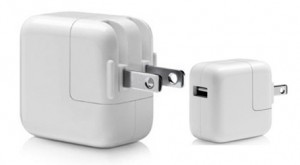
There is a huge variance, then, between normal USB ports rated at 500mA, and dedicated charging ports, which range all the way up to 3,000mA. This leads to an important question: If you take a phone which came with a 900mA wall charger, and plug it into a 2,100mA iPad charger, as an example, will it blow up? In short, no: You can plug any USB device into any USB cable and into any USB port, and nothing will explode — and in fact, using a more powerful charger should speed up battery charging. We now do this all the time with our mobile devices here at ExtremeTech, and we’ve never had a problem. The longer answer is that the age of your device plays an important role, dictating both how fast it can be charged, and whether it can be charged using a wall charger at all. Way back in 2007, the USB Implementers Forum released the Battery Charging Specification, which standardized faster ways of charging USB devices, either by pumping more amps through your PC’s USB ports, or by using a wall charger. Shortly thereafter, USB devices that implemented this spec started to arrive. If you have a modern USB device — really, almost any smartphone, tablet, or camera — you should be able to plug into a high-amperage USB port and enjoy faster charging. If you have an older product, however, it probably won’t work with USB ports that employ the Battery Charging Specification. It might only work with old school, original (500mA) USB 1.0 and 2.0 PC ports. In some (much older) cases, USB devices can only be charged by computers with specific drivers installed, but this is now going back more than a decade. There are a few other things to be aware of. While PCs can have two kinds of USB port — standard downstream or charging downstream — OEMs haven’t always labeled them as such. As a result, you might have a device that charges from one port on your laptop, but not from the other. This is a trait of older computers, as there doesn’t seem to be a reason why standard downstream ports would be used, when high-amperage charging ports are available. Most vendors now put a small lightning icon above the proper charging port on laptops, and in some cases, those ports can even stay on when the lid is closed. In a similar vein, some external devices — 3.5-inch hard drives, most notably — require more power than a typical USB port can provide. That’s why they include a two-USB-port Y-cable, or an external AC power adapter. Otherwise, USB has certainly made charging our gadgets and peripherals much easier than it ever has been. And if the new USB-C connector continues to catch on, things will get even simpler, because you’ll never again have to curse out loud after plugging it in the wrong way. Check out our ExtremeTech Explains series for more in-depth coverage of today’s hottest tech topics. Sebastian Anthony wrote the original version of this article. It has since been updated several times with new information. (Top image credit: Jamie Lendino) Click to Post
0 notes